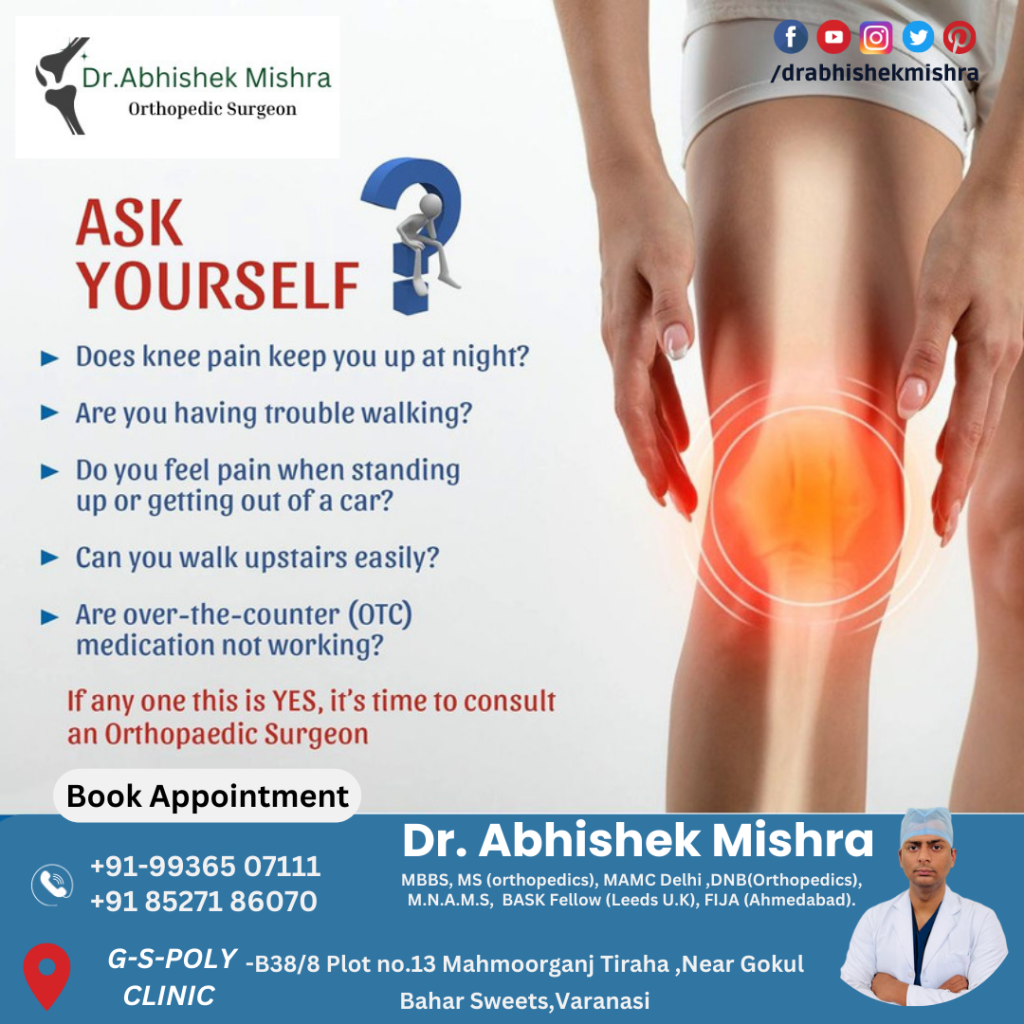
Orthopedic injuries encompass a wide range of musculoskeletal problems that affect bones, muscles, ligaments, tendons, and joints. Understanding the anatomy involved in these injuries is crucial for both orthopedic doctors and patients. Let’s explore the anatomy of some common orthopedic injuries: best orthopedic doctor in varanasi
- Fractures: Fractures are breaks or cracks in bones and can occur in various ways, such as due to trauma, falls, or overuse. Understanding the different types of fractures is essential in determining the appropriate treatment approach.best orthopedic doctor in varanasi
- Closed Fracture: The bone breaks, but the skin remains intact. best orthopedic doctor in varanasi
- Open Fracture: The bone breaks and pierces through the skin, creating an open wound. best orthopedic doctor in varanasi
- Stress Fracture: Small cracks in the bone caused by repetitive stress or overuse.best orthopedic doctor in varanasi
- best orthopedic doctor in varanasi
- Sprains: Sprains involve stretching or tearing of ligaments, which are tough bands of connective tissue that connect bones to other bones at joints. Commonly affected areas are the ankles, knees, and wrists.best orthopedic doctor in varanasi
- Strains: Strains are injuries to muscles or tendons, which connect muscles to bones. These can occur due to overstretching or excessive muscle contraction.
- Sprains: Sprains involve stretching or tearing of ligaments, which are tough bands of connective tissue that connect bones to other bones at joints. Commonly affected areas are the ankles, knees, and wrists.best orthopedic doctor in varanasi
- Strains: Strains are injuries to muscles or tendons, which connect muscles to bones. These can occur due to overstretching or excessive muscle contraction.best orthopedic doctor in varanasi
- Tendonitis: Tendonitis is the inflammation of tendons, usually caused by repetitive movements or overuse. It commonly affects tendons around shoulders, elbows, wrists, knees, and ankles.best orthopedic doctor in varanasi
- Rotator Cuff Tears: The rotator cuff is a group of muscles and tendons surrounding the shoulder joint. Tears in the rotator cuff can result from acute injuries, chronic overuse, or age-related degeneration.best orthopedic doctor in varanasi
- Meniscus Tears: The meniscus is a cartilage structure in the knee that acts as a shock absorber. Tears in the meniscus often occur during twisting or sudden movements.best orthopedic doctor in varanasi
- Herniated Disc: The spine is composed of vertebrae separated by discs. A herniated disc occurs when the soft inner material of the disc bulges or ruptures through the tough outer layer, potentially compressing spinal nerves.best orthopedic doctor in varanasi
- Osteoarthritis: Osteoarthritis is a degenerative joint disease that occurs when the protective cartilage on the ends of bones wears down over time. It commonly affects weight-bearing joints like knees, hips, and spine.best orthopedic doctor in varanasi
- Carpal Tunnel Syndrome: Carpal tunnel syndrome is a condition where the median nerve is compressed as it passes through the wrist. It leads to numbness, tingling, and weakness in the hand and fingers.
- Plantar Fasciitis: Plantar fasciitis is inflammation of the plantar fascia, a thick band of tissue running along the bottom of the foot. It causes heel pain and is often related to excessive running or improper footwear.
- Tendonitis: Tendonitis is the inflammation of tendons, usually caused by repetitive movements or overuse. It commonly affects tendons around shoulders, elbows, wrists, knees, and ankles.
- Rotator Cuff Tears: The rotator cuff is a group of muscles and tendons surrounding the shoulder joint. Tears in the rotator cuff can result from acute injuries, chronic overuse, or age-related degeneration.
- Meniscus Tears: The meniscus is a cartilage structure in the knee that acts as a shock absorber. Tears in the meniscus often occur during twisting or sudden movements.
- Herniated Disc: The spine is composed of vertebrae separated by discs. A herniated disc occurs when the soft inner material of the disc bulges or ruptures through the tough outer layer, potentially compressing spinal nerves.
- Osteoarthritis: Osteoarthritis is a degenerative joint disease that occurs when the protective cartilage on the ends of bones wears down over time. It commonly affects weight-bearing joints like knees, hips, and spine.
- Carpal Tunnel Syndrome: Carpal tunnel syndrome is a condition where the median nerve is compressed as it passes through the wrist. It leads to numbness, tingling, and weakness in the hand and fingers.
- Plantar Fasciitis: Plantar fasciitis is inflammation of the plantar fascia, a thick band of tissue running along the bottom of the foot. It causes heel pain and is often related to excessive running or improper footwear.
Understanding the anatomy of these common orthopedic injuries helps orthopedic doctors accurately diagnose and treat patients. Additionally, it empowers individuals to take preventive measures, adopt proper techniques during physical activities, and seek medical attention promptly if they experience any signs of injury or discomfort. Maintaining a healthy and active lifestyle, along with knowledge about injury prevention, can significantly contribute to better orthopedic health in the long run.

No responses yet